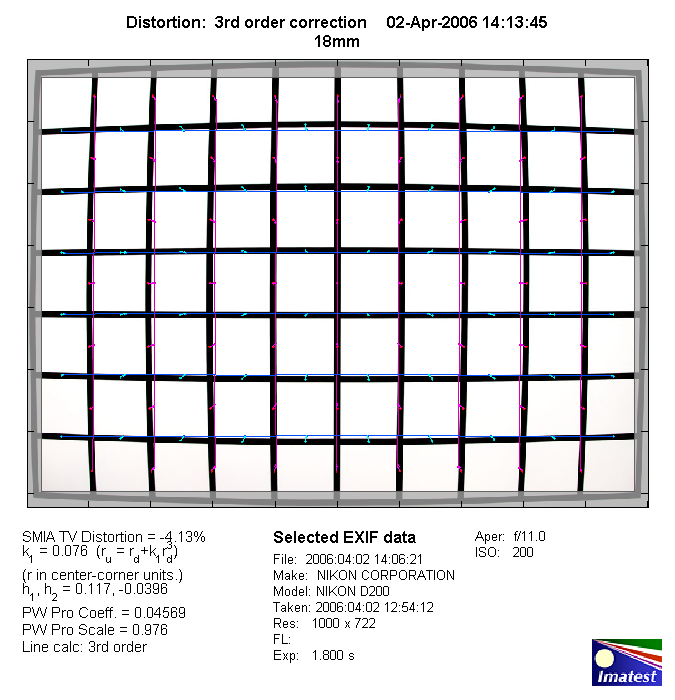|
Page 2 of 3

Distortion
Super zoom lenses usually show very pronounced image distortion and the Nikkor 18-200 VR II is no exception in this regard. At its shortest setting, the lens shows very pronounced barrel distortion. At 24mm the distortion is mostly gone. At longer focal lengths, distortion flips over to a pincushion type, reaching its maximum around 50mm. At 100mm and 200mm the amount of distortion is a bit lower, but still on a quite high level that can be annoying, especially with subjects having straight lines near the image borders.
|
Move the mouse cursor over the focal length text marks below to observe the respective distortion
|
| 18mm |
24mm |
50mm |
100mm |
200mm |
|

|
The chart above has a real-world size of about 120x80cm.
Vignetting
Except for wide open apertures at 18mm and to some degree also at 100mm and 200mm, vignetting is quite well under control. At the extreme ends of the focal range, stopping down one stop is advisable if the light fall-off is an issue with the intended subject.

MTF (resolution)
For a super zoom, the lens performes very well regarding sharpness. The center resolution is excellent in the lower focal range, dropping to "just" very good sharpness from 100mm onwards.
The borders and corners suffer a little wide open at 18mm. Stopping down however lifts the resolution to good (corners) and very good (borers) values. At 24mm the borders perform better, with very good resolution at any tested aperture. The corners fall quite a bit behind, the lens needs to be stopped down to f/8 to reach good sharpness here. The situation is very similar at 50mm, however the corners deliver better values stopped down.
At 100mm, the border and corner sharpness drops considerably, showing quite soft results wide open. The lens needs to be stopped down to f/11 here to achieve very good sharpness across the frame. At 200mm, the sharpness wide open is better again, but stopping down does not significantly improve resolution at the image borders and only slightly in the corners.
The lens showed quite pronounced field curvature and high residual spherical aberrations (focus shift when stopping down) at the wide end of the zoom range.
Please note that the MTF results are not directly comparable across the different systems!
Below is a simplified summary of the formal findings. The chart shows line widths per picture height (LW/PH) which can be taken as a measure for sharpness.
If you want to know more about the MTF50 figures you may check out the corresponding Imatest Explanations

Chromatic Aberrations (CAs)
CAs (color shadows at harsh contrast transitions) are quite high, reaching values beyond 2 pixels at 200mm wide open and generally well above 1 pixel, except for the 100mm setting.
However, CAs can easily be corrected in software or by the camera itself (most modern Nikon DSLRs remove CAs themselves if you shoot JPGs).

|